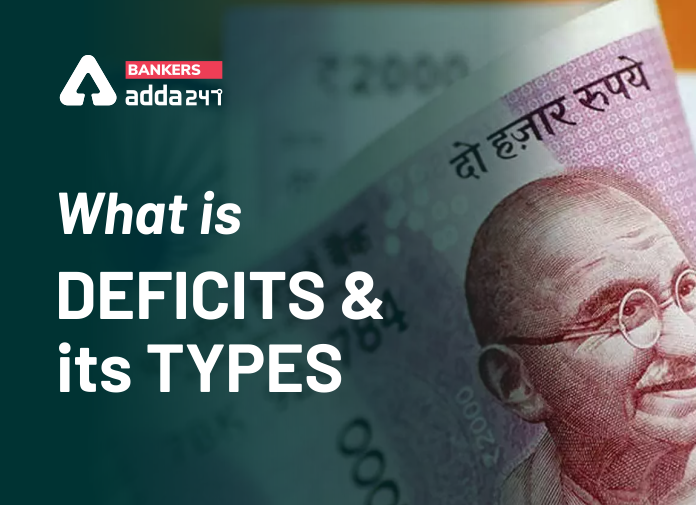Banking awareness is one such topic in GA section which can fetch you those extra marks that you might help you to get your name in the final merit list. It is an important section and must be revise thoroughly. It will not only help you in your mains examination but will also help you to sail through Interview stage as well because majority of the questions asked in interview are from this topic. The panel expects a banking aspirant to be atleast verse in the basic banking and financial terms. In this article, we will be discussing one of the commonly used term Deficit and will try to explain you in depth about it and its type.
Also check,
| What is MCLR? |
What is Deficit?
A deficit is defined when the expenditure is more over revenue for a given period of time.
Types of Deficit
There are four types of deficits namely Revenue Deficit, Fiscal Deficit Primary Deficit and Current Account Deficit.
Revenue deficit is defined as the difference between the total revenue expenditure and expected revenue or Revenue deficit = Total revenue expenditure – Revenue Receipts. This term is only related to the revenue expenditure and not the total expenditure.
Example: Ram opens a toy shop. He expects revenue of Rs 5000 from his total sales, but due to less sales, only Rs 4000 could be made as revenue, then this deficit of Rs 1000 is revenue deficit.
Also read,
| How To Manage Mental Stress During Lockdown? | Share Your Success Story And Inspire Others | Lockdown 2.0 – What are Red, Orange and Green Zones? |
Fiscal deficit- Fiscal Deficit is defined when the total expenditure of government is greater than the total revenue generated. While The borrowings of the government are not added in the revenue, but Fiscal deficit mainly indicates government’s borrowings only. We can express this statement as, Fiscal deficit = Total expenditure – Total revenue excluding borrowings. If there is a large deficit it will mean a large amount of borrowings. There are many sources from which Government borrows like market or central bank to meet its expenditure needs. Government can also print money to meet expenditure needs but that will lead to inflation. Fiscal Deficit is determined on Capital Expenditure, and it can happen without a revenue deficit also.
Primary Deficit- Primary Deficit is defined when interest payments are deducted from the fiscal deficit. We can also say that Primary Deficit is a part of Fiscal Deficit. It can be represented as Primary deficit = Fiscal Deficit – Interest payments. Interest payments in primary deficits mean the payments made on the previous borrowings taken by the government.
Also Read,
| What is Repo Rate ? | What is PMJDY? | CLR Vs SLR | Coronavirus Count |
Current Account Deficit- Current Account Deficit is defined when the total import value of goods/services of a country exceeds the total export value. We can also say that it is an international matter. The above mentioned definition can be represented as, CAD = Total imports value – Total exports value. It is also referred as trade deficit. CAD does not necessarily mean that it is harmful for a country because it can also mean investments in the country giving jobs to its people. CAD is calculated as a percentage of Gross Domestic Product (GDP).
Click Here to Register for Bank Exams 2020 Preparation Material
Practice With,



 Weekly Current Affairs One Liners 23rd t...
Weekly Current Affairs One Liners 23rd t...
 CSIR CRRI Typing Test 2025 Date for JSA ...
CSIR CRRI Typing Test 2025 Date for JSA ...
 Can Final Year Students Apply for SBI PO...
Can Final Year Students Apply for SBI PO...


